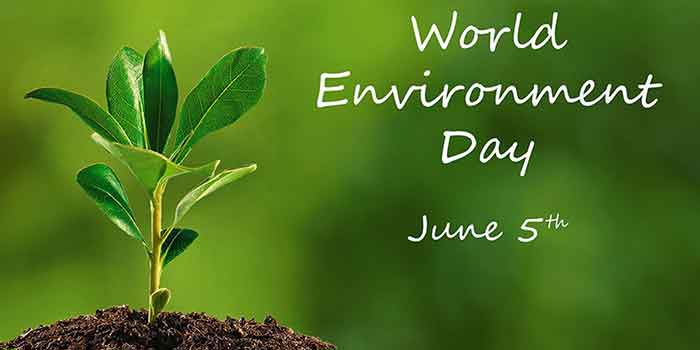
Every year, 5 June is celebrated as World Environment Day globally. Also called People’s day, this day is meant to encourage people to save and protect the environment. World Environment Day 2020 is spotlighting the importance of Biodiversity. According to the United Nations, the theme for this year is ‘Biodiversity’ with the slogan ‘Time for Nature’.
Biodiversity refers to the total variety of life on earth. It includes a vast array of species of microorganisms, algae, fungi, plants, and animals existing on the earth either in terrestrial or aquatic habitats. From the smallest bacteria to the largest vertebrate, every living organism is imperative. All the organisms are interconnected, show interdependence, and maintain Ecological balance that is vital to the survival of all life on earth. The loss of a single element from nature can lead to an imbalance that can disrupt the natural balance of an ecosystem. As of now, nature has undergone upsetting to a great degree due to biodiversity loss.
The challenge that human beings are facing in the form of the COVID- 19 pandemic is thought to be a fallout of this disturbance. Environmental scientists have provided strong evidence to explain how biodiversity loss is a contributive factor of infectious diseases. According to experts, loss of biodiversity has the potential to increase the number of cases of Zoonosis (an animal disease that can be transmitted to humans). One of the estimates suggests that about 70% of emerging infectious diseases in recent years have stemmed from zoonosis. And, notably, all available evidence for COVID-19 allude that it has a Zoonotic source.
Usually, several species are involved in the spread of infection, and extensive tracts of undisturbed nature act as a buffer zone from deadly diseases like Covid-19. By loss of biodiversity, that involves the destruction of natural habitats of these species and extinction of species, the pathogens are displaced from their native hosts and shortcut is created for them into the human population. A sharp rise in malaria was seen in the Amazon basin caused by the decimation of the forest. Ebola and bird flu have also been found to have the same reasons for spread. The COVID-19 that has created chaos all over the world is also said to be a consequence of deterioration in conditions of biodiversity. Ongoing researches imply that the transmission of coronavirus from animals, straightly to humans has been possible due to the extinction of intermediate species involved.
Infectious disease control is not the only function of biodiversity; it is the pillar that permits ecosystems to function and humans to thrive. Biodiversity constitutes the source of our food and other improved varieties. It is paramount for economic growth and poverty reduction. It provides raw materials for consumption and production thus influence the economy. The majority of the world’s poor depend directly or indirectly upon it through forests, water, wetlands, fields, and pastures for their livelihoods. Biodiversity has its impact even on climate conditions and its other values like scientific, cultural, and ascetic cannot be misprized. Human beings have been bestowed with the highest thinking capacity and their role is greater in the world. However, Humans are evading their responsibilities repeatedly. We never try to strike balance between the demands of development and the need for protection of the environment. We talk much about sustainable development but in practice, we hardly care.
Man is largely responsible for the elimination of many species. Destruction of habitat and fragmentation due to our development work, deforestation, forest fires resulting from our activities, pollution, etc has caused the most serious threat to biodiversity.
A startling report from the United Nations showed recently Human activity puts one million species of plants and animals at risk of extinction. As per reports of the World Conservation Monitoring Centre, near about thousand animal species and five hundred plant species have become extinct owing to human intervention since 1600. According to another finding, it has been found that on average, one species of mammals has disappeared from the earth every year since 1900. Besides mammals, many other animals have been driven to extinction and anthropogenic extinction has been predominant than natural and mass extinctions. If this continues, time is not far when the Humans will have to encounter the worst and we would find ourselves on the verge of mass extinction.
The concerned authorities and environmentalists are making the utmost efforts to draw the attention of masses to the disastrous decline in biodiversity. Plans are being formulated to curb growing environmental issues. But it is indisputable fact that without public involvement no initiative can work. Therefore, responsible citizens’ especially educated youth need to come forward and to work in close cooperation with the government, and non-government environment organizations. Acquainting and associating more and more people about and with the mission of protecting the environment in general and biodiversity, in particular, can help in fulfilling objectives. We all need to make ‘Time for Nature’ and act now to fix things.
Zeeshan Rasool Khan writes on current socio-political issues. He tweets @zeeshan_rk and can be mailed at [email protected].
SIGN UP FOR COUNTERCURRENTS DAILY NEWS LETTER















































